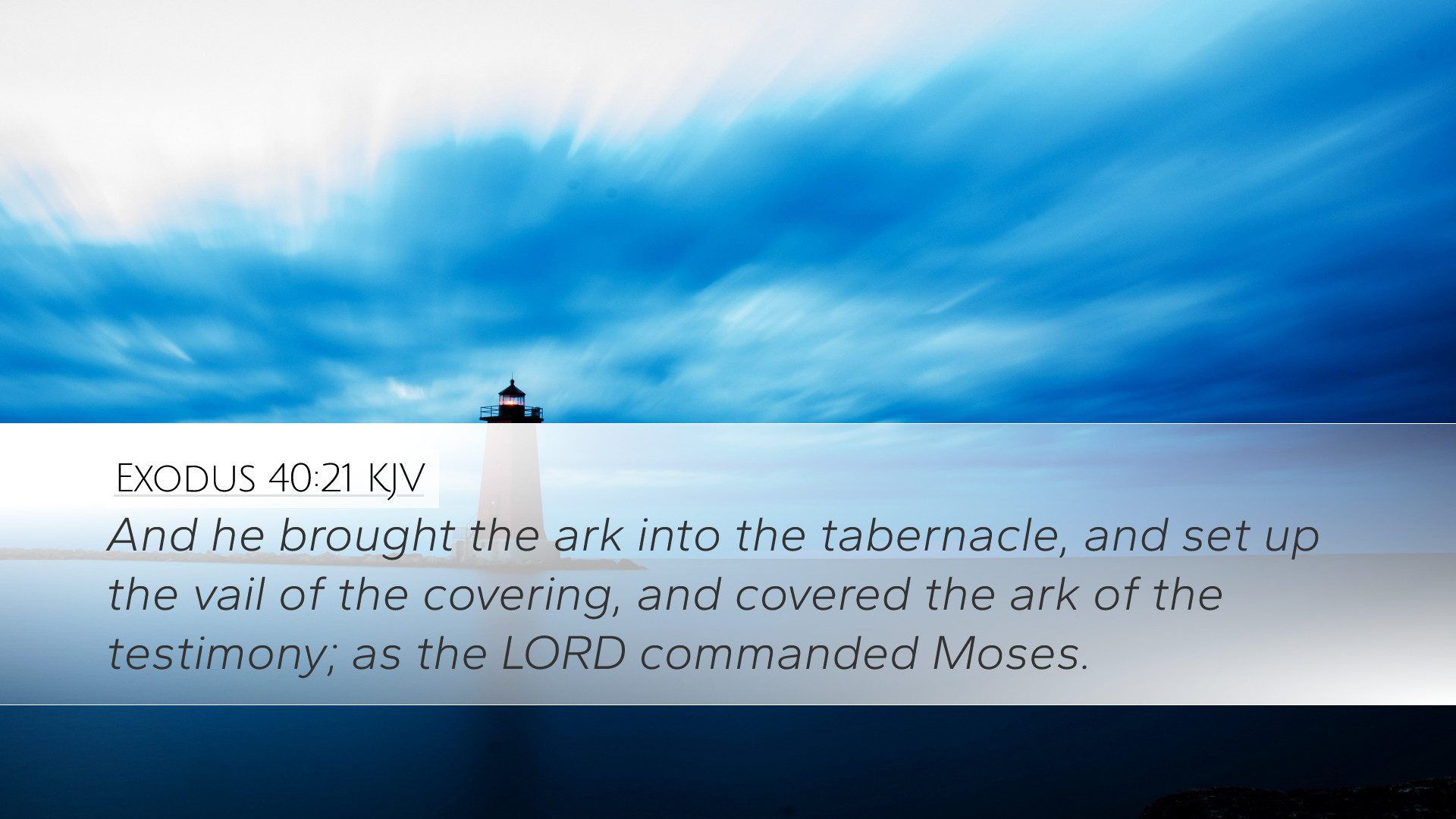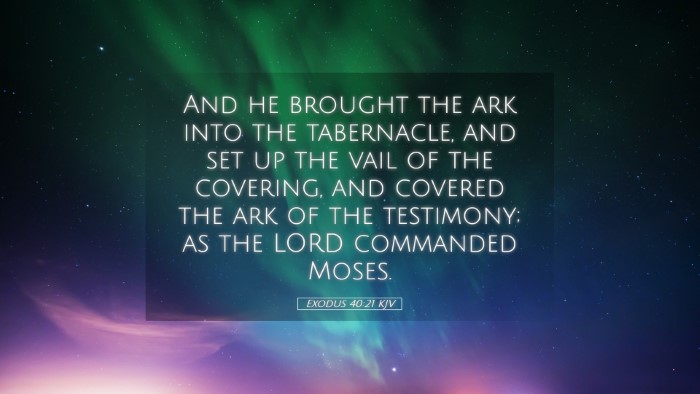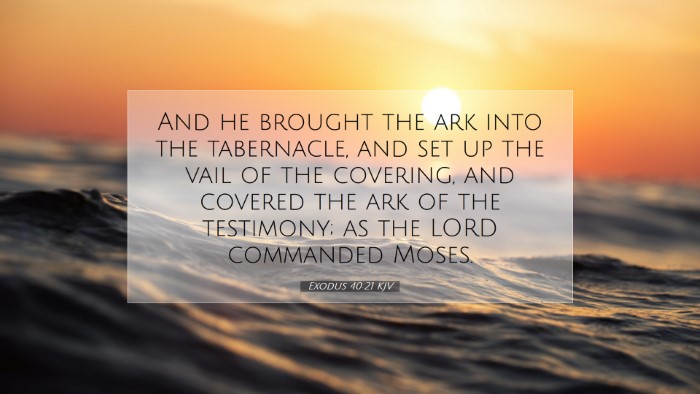Commentary on Exodus 40:21
Verse Overview:
Exodus 40:21 states: "And he brought the ark into the tabernacle, and set up the vail of the covering, and covered the ark of the testimony; as the LORD commanded Moses."
This verse signifies the culmination of the Israelites' journey in the wilderness and the initial establishment of the worship system prescribed by God. It mirrors the themes of obedience, divine order, and the sacred nature of worship.
Insights from Matthew Henry
Henry's Exposition: Matthew Henry emphasizes the importance of the tabernacle as the meeting place between God and man. He notes that the ark of the covenant, representing God's presence, was placed in the most sacred part of the tabernacle, highlighting its significance in Israelite worship.
The meticulous obedience in the instructions given to Moses reflects the reverence due to God. Henry observes that the vail served to separate the holy from the most holy, symbolizing the holiness of God and the need for man's approach to be governed by divine order.
Theological Implications:
Henry illustrates the theological depth of the vail, which not only marks a physical barrier but also signifies the spiritual separation between God and humanity due to sin. The act of covering the ark shows both protection of the holiness and the preparation for worship activities that followed.
Insights from Albert Barnes
Barnes' Notes on the Bible: Albert Barnes provides a detailed analysis of the significance of the ark in this passage. He asserts that the ark was not just a physical object but a poignant reminder of God’s covenant with His people. The act of bringing it into the tabernacle initiates a new phase in the life of Israel as a worshiping community.
Barnes points out that setting up the vail signifies the acknowledgment of God's holiness and the need for reverence in worship. The vail serves as a curtain that protects the people from the direct presence of God, as no sinful man can behold Him and live (Exodus 33:20).
Worship and Holiness:
According to Barnes, the principles of worship are evident through this command. The emphasis on obedience to God’s directions illustrates the necessity of adhering to divine guidelines in worship. This sets a precedent for future generations regarding how they approach God.
Insights from Adam Clarke
Clarke's Commentary: Adam Clarke takes a comprehensive approach, focusing on the construction and function of the tabernacle. He elaborates that the ark of the covenant is often regarded as the heart of the tabernacle and speaks of God’s sovereign presence among His people.
Clarke emphasizes that Moses' actions in setting up the vail and placing the ark represent the fulfillment of God's promises. The vail was an essential element of the tabernacle since it both concealed and revealed God's glory, depending on the worship context.
The Role of the Vail:
In Clarke’s view, the vail can also be understood typologically. It foreshadows the ultimate separation caused by sin, and the eventual tearing of the vail at Christ's crucifixion (Matthew 27:51), which opens access to God's presence for all believers.
Conclusion
The significance of Exodus 40:21 extends beyond its immediate context. It encapsulates essential themes of God’s desire to dwell with His people, the need for holiness in worship, and the anticipation of the ultimate reconciliation between God and humanity through Christ. The reflections from Henry, Barnes, and Clarke provide rich theological insights that guide pastors, students, theologians, and Bible scholars in understanding the depth of this verse.
As future generations continue to interpret and apply this scripture, the emphasis on obedience, the sacredness of worship, and God’s grace in allowing access to His presence must remain paramount in their considerations.


